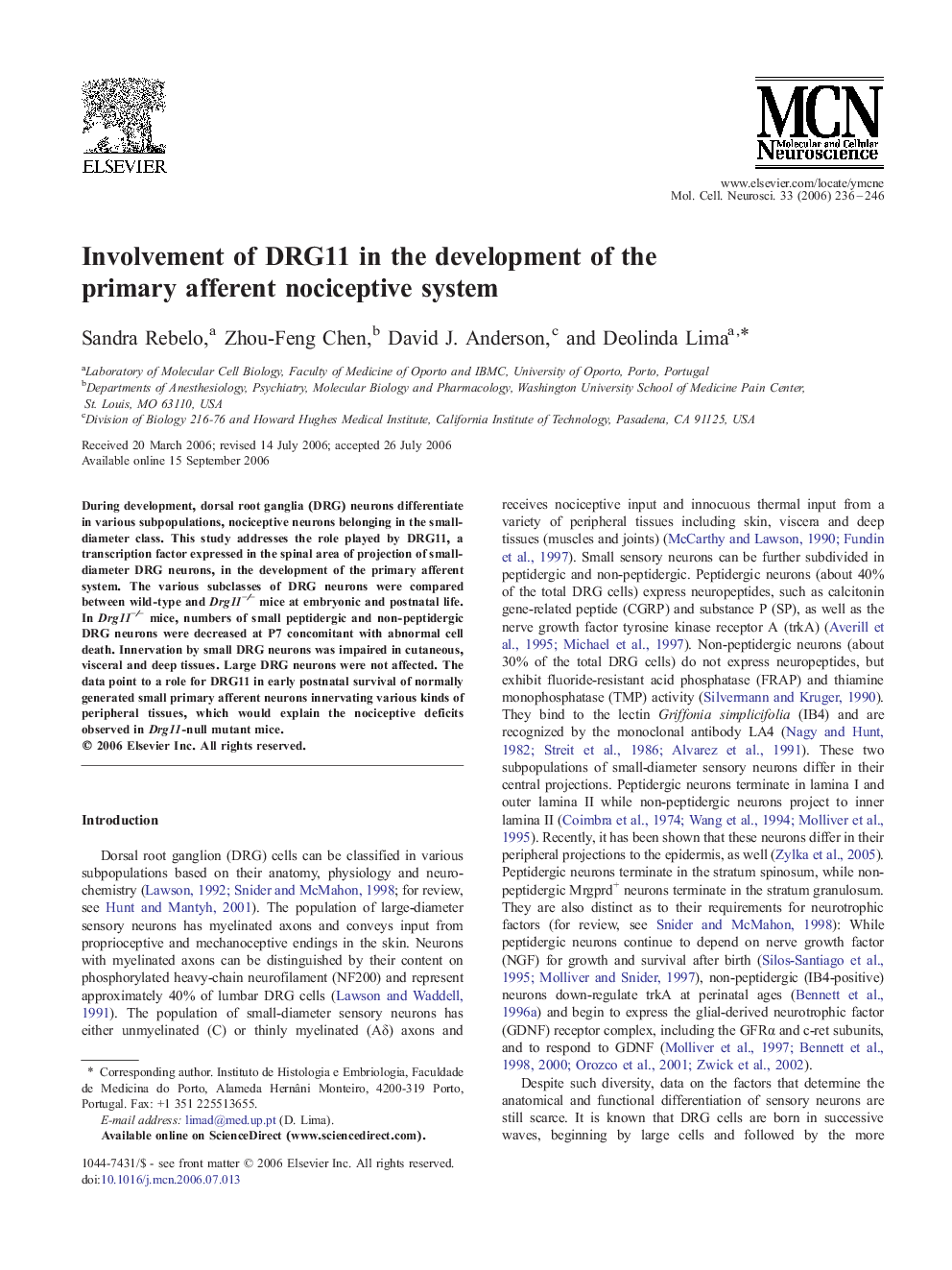| Article ID | Journal | Published Year | Pages | File Type |
|---|---|---|---|---|
| 2199543 | Molecular and Cellular Neuroscience | 2006 | 11 Pages |
Abstract
During development, dorsal root ganglia (DRG) neurons differentiate in various subpopulations, nociceptive neurons belonging in the small-diameter class. This study addresses the role played by DRG11, a transcription factor expressed in the spinal area of projection of small-diameter DRG neurons, in the development of the primary afferent system. The various subclasses of DRG neurons were compared between wild-type and Drg11â/â mice at embryonic and postnatal life. In Drg11â/â mice, numbers of small peptidergic and non-peptidergic DRG neurons were decreased at P7 concomitant with abnormal cell death. Innervation by small DRG neurons was impaired in cutaneous, visceral and deep tissues. Large DRG neurons were not affected. The data point to a role for DRG11 in early postnatal survival of normally generated small primary afferent neurons innervating various kinds of peripheral tissues, which would explain the nociceptive deficits observed in Drg11-null mutant mice.
Related Topics
Life Sciences
Biochemistry, Genetics and Molecular Biology
Cell Biology
Authors
Sandra Rebelo, Zhou-Feng Chen, David J. Anderson, Deolinda Lima,
